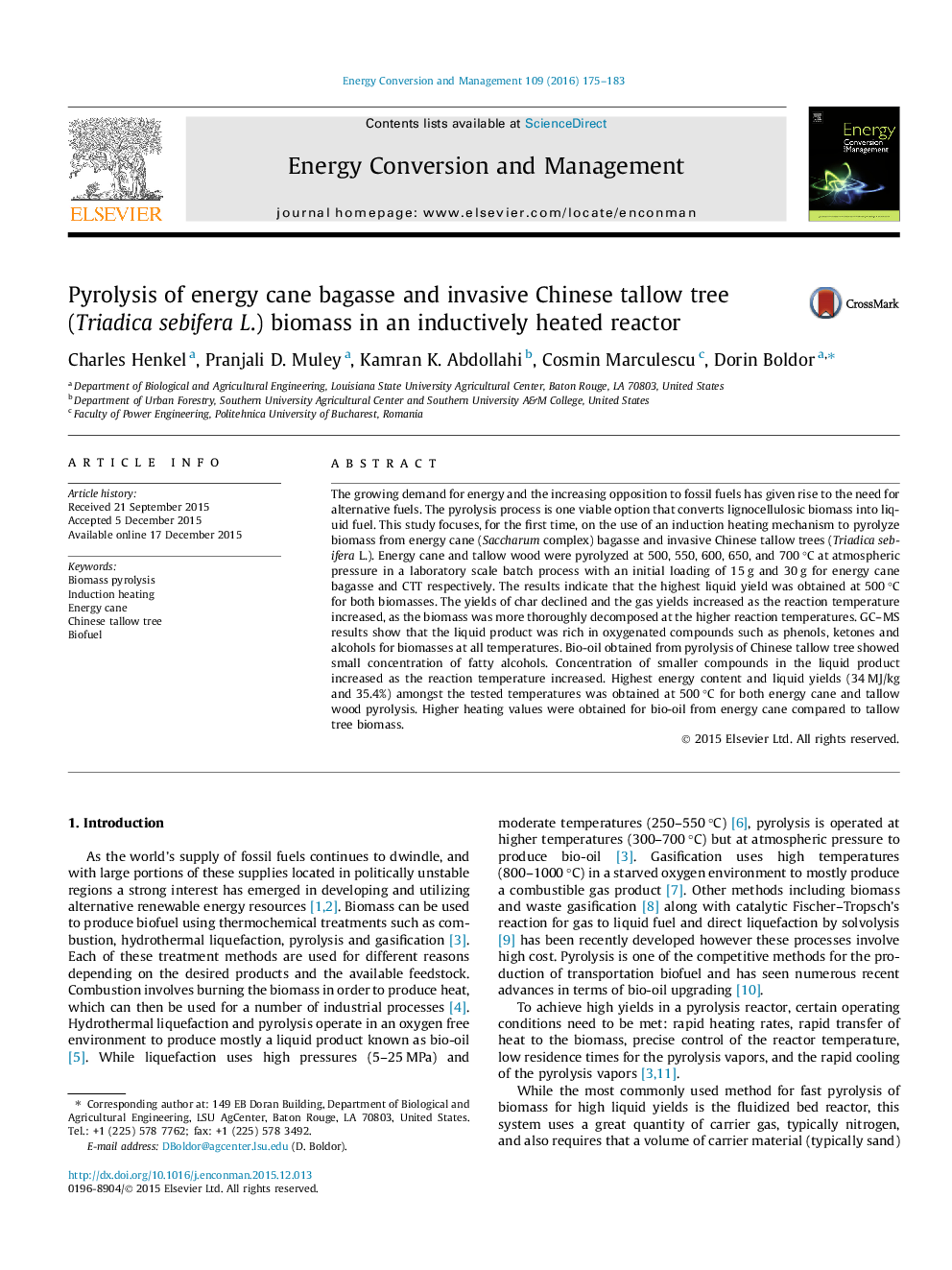| کد مقاله | کد نشریه | سال انتشار | مقاله انگلیسی | نسخه تمام متن |
|---|---|---|---|---|
| 760432 | 1462853 | 2016 | 9 صفحه PDF | دانلود رایگان |

• Energy cane & Chinese tallow tree (CTT) biomass was pyrolyzed via induction heating.
• Increasing temperature (500–700°C) increased gas yield & decreased liquid yield.
• Highest liquid yield was achieved for energy cane at 500 °C.
• Nitrogen and hydrogen content of CTT bio-oil increased as the temperature increased.
• CTT bio-oil had higher % fatty alcohols; energy cane bio-oil was richer in phenols.
The growing demand for energy and the increasing opposition to fossil fuels has given rise to the need for alternative fuels. The pyrolysis process is one viable option that converts lignocellulosic biomass into liquid fuel. This study focuses, for the first time, on the use of an induction heating mechanism to pyrolyze biomass from energy cane (Saccharum complex) bagasse and invasive Chinese tallow trees (Triadica sebifera L.). Energy cane and tallow wood were pyrolyzed at 500, 550, 600, 650, and 700 °C at atmospheric pressure in a laboratory scale batch process with an initial loading of 15 g and 30 g for energy cane bagasse and CTT respectively. The results indicate that the highest liquid yield was obtained at 500 °C for both biomasses. The yields of char declined and the gas yields increased as the reaction temperature increased, as the biomass was more thoroughly decomposed at the higher reaction temperatures. GC–MS results show that the liquid product was rich in oxygenated compounds such as phenols, ketones and alcohols for biomasses at all temperatures. Bio-oil obtained from pyrolysis of Chinese tallow tree showed small concentration of fatty alcohols. Concentration of smaller compounds in the liquid product increased as the reaction temperature increased. Highest energy content and liquid yields (34 MJ/kg and 35.4%) amongst the tested temperatures was obtained at 500 °C for both energy cane and tallow wood pyrolysis. Higher heating values were obtained for bio-oil from energy cane compared to tallow tree biomass.
Figure optionsDownload as PowerPoint slide
Journal: Energy Conversion and Management - Volume 109, 1 February 2016, Pages 175–183